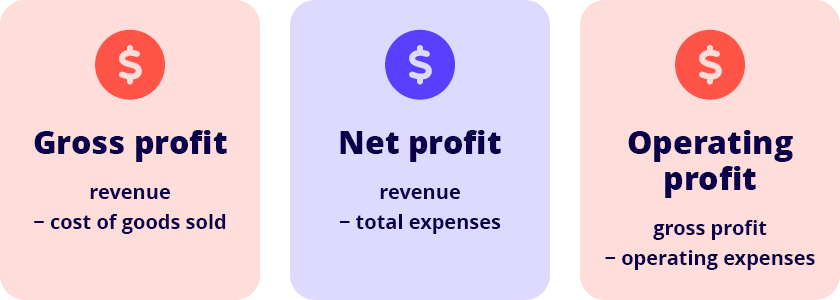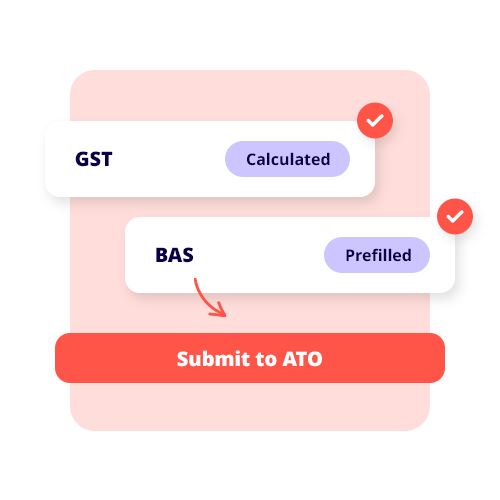Your profit is the money you’re left with after deducting your business expenses. When your business generates revenue and then accounts for all debts and outgoings, the cash you take home is your profit.
However, it’s not always such a simple calculation. There are three main types of profit: gross profit, net profit, and operating profit. Let’s unpack how to calculate each profit type.

1. Gross profit
Gross profit is a calculation that only considers your cost of goods sold (COGS). So, the gross profit would be your profits after deducting the direct costs associated with the production and delivery of your goods or services. When you calculate gross profit vs net profit, you don’t include every business expense nor taxes.
Gross profit indicates that your business can make money.
Gross profit calculation
The gross profit formula is as follows:
Gross Profit = Revenue – COGS
2. Net Profit
Net profit, or net income, is the profit your business makes after deducting all business expenses. While gross profit only considers your COGS, net profit deducts every single expense your business incurs in its entire operations—from electricity to taxes.
Net profit indicates what profit your business is making after income tax.
Net profit calculation
The net profit formula is as follows:
Net Profit = Revenue – Total Expenses
3. Operating profit
In business ownership, operating profit is your gross profit but minus your operating costs and depreciation. Operating profit ignores any interest on loans. (Operating costs are things like electricity, rent, phone bills et cetera.)
Knowing your operating profit figure is incredibly useful in understanding whether your business is profitable and healthy.
Operating profit calculation
Operating Profit = Gross Profit – Operating Expenses
See related terms
What is gross profit?
What is net profit?
How to calculate net profit






























